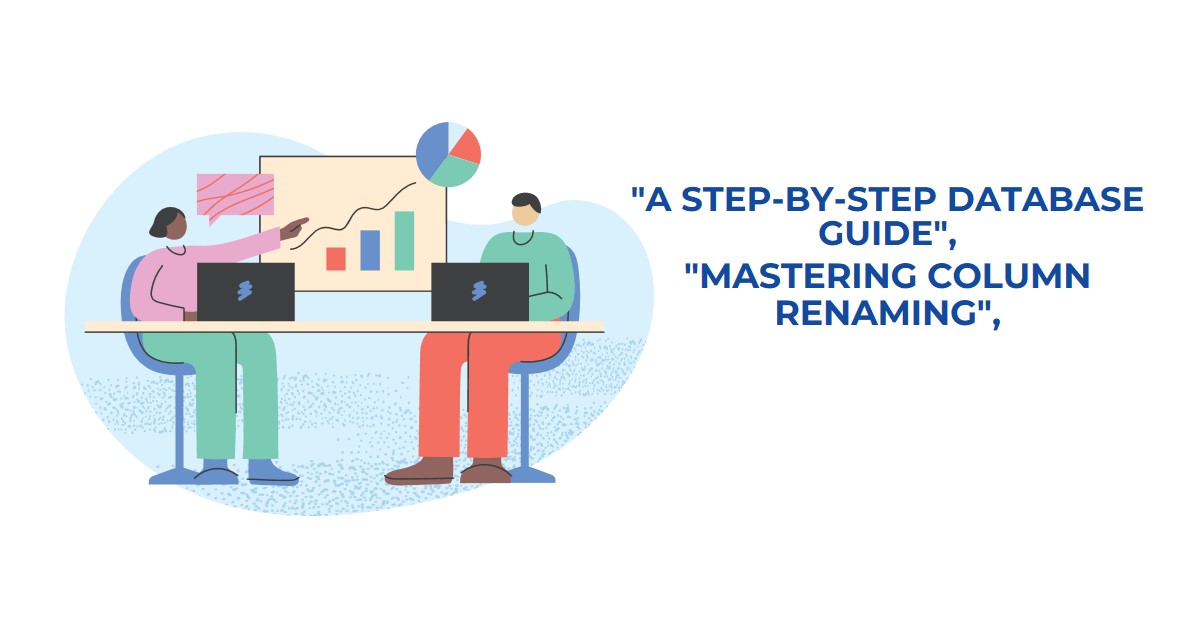How to Rename a Column in a Database: A Comprehensive Guide
Renaming a column in a database might sound like a straightforward task, but it requires careful consideration and a solid understanding of your database schema. Whether you’re rebranding, improving naming conventions, or fixing an oversight, renaming a column is a common yet critical operation for developers and database administrators.
Let’s dive into the why, how, and best practices of renaming a column effectively.
Why Rename a Column?
- Clarity: Improve the readability and maintainability of your database.
- Example: Changing
usrNametouserNamefor consistency.
- Example: Changing
- Consistency: Align column names with coding standards or team conventions.
- Business Changes: Adapt to evolving business requirements or branding shifts.
- Example: Changing
customerIDtoclientIDafter a rebranding initiative.
- Example: Changing
- Error Correction: Fix typos or misleading names to avoid confusion.
- Example: Renaming
emialtoemail.
- Example: Renaming
Steps to Rename a Column
Renaming a column involves different approaches depending on the database system you’re using. Here are step-by-step instructions for popular databases:
1. MySQL
MySQL uses the ALTER TABLE statement:
ALTER TABLE table_name CHANGE old_column_name new_column_name data_type;
Example:
ALTER TABLE users CHANGE usrName userName VARCHAR(100);
Note: Ensure you specify the data type during the rename operation.
2. PostgreSQL
PostgreSQL provides the ALTER TABLE statement with RENAME COLUMN:
ALTER TABLE table_name RENAME COLUMN old_column_name TO new_column_name;
Example:
ALTER TABLE employees RENAME COLUMN emial TO email;
3. SQL Server
SQL Server uses sp_rename for column renaming:
EXEC sp_rename 'table_name.old_column_name', 'new_column_name', 'COLUMN';
Example:
EXEC sp_rename 'users.usrName', 'userName', 'COLUMN';
4. Oracle
Oracle doesn’t support direct renaming of columns. Instead, you can:
- Add a new column with the desired name.
- Copy data from the old column to the new one.
- Drop the old column.
Example:
ALTER TABLE employees ADD email VARCHAR2(100);
UPDATE employees SET email = emial;
ALTER TABLE employees DROP COLUMN emial;
Best Practices
- Backup Your Data: Always create a backup before modifying your database.
- Update Dependencies: Ensure you update any code, stored procedures, or reports that reference the old column name.
- Test Thoroughly: Test your application after the change to catch any broken queries or functionality.
- Communicate Changes: Notify your team about the changes to avoid confusion.
Common Mistakes to Avoid
- Skipping the Data Type in MySQL: Forgetting to specify the data type can result in errors.
- Overlooking Dependencies: Neglecting to update scripts, queries, or external integrations can cause downtime.
- Making Changes in Production: Always test in a staging environment before deploying changes.



